E2EVC is now in its 20th year having started in 2003. It is a unique event bringing together independent consultants, customers, partners, vendors, and even competitors. The E2EVC community is the most talented community within the EUC industry.
The latest event took place in Rome from November 3-5. My journey started in Dublin on the afternoon of the November2; the flight was fairly uneventful apart from the last 20 minutes, this was due to the extreme turbulence we encountered.

After a quick taxi ride and after dropping my bags in my room, I joined the pre-event networking event. It was great to be among my peers again and see people whom I’ve not seen since the pandemic.
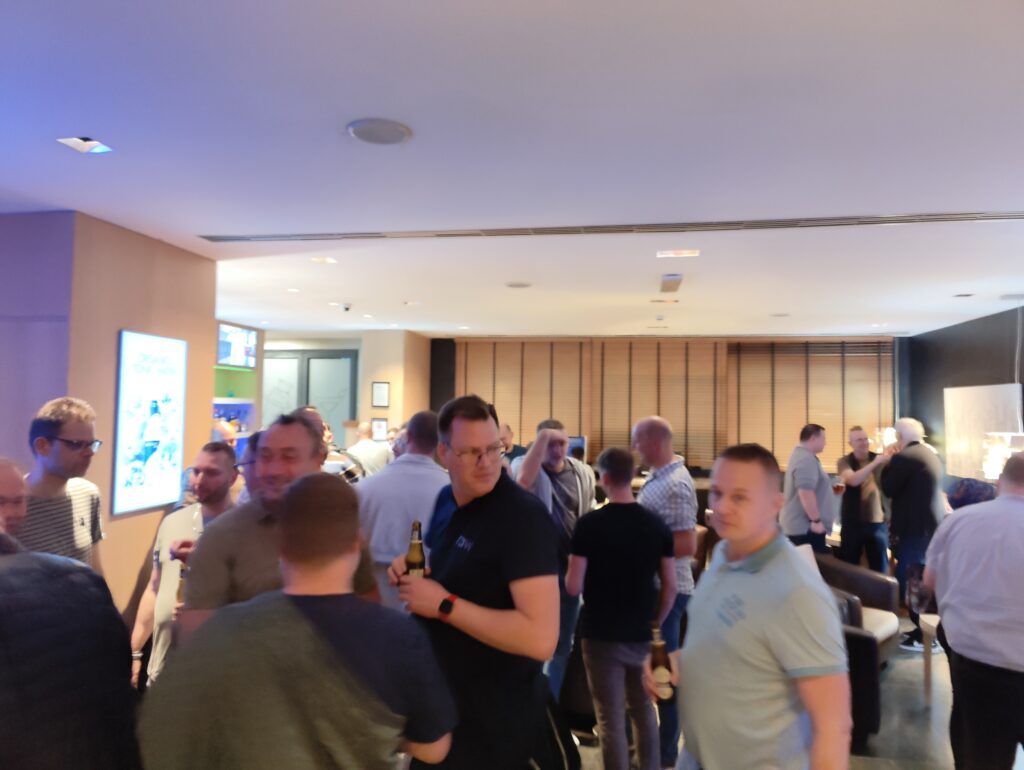
Day 1
I started the day with a quick review of my slides as I was presenting two sessions – the Liquidware sponsor session and a community session with Gerjon Kunst on the impact of AI on EUC.
I headed down to watch the intro session from Alex Cooper, the founder of E2EVC who, as usual, was dressed to suit the city – he was supposed to be Michael Corleone but looked more like a member of the Peaky Blinders.
Last time I checked E2E has never been in Birmingham!

The morning continued with sponsor sessions, starting with Eugene Kaleyev talking about the latest ControlUp release and how the platform is moving towards a SaaS model. Next up was Chris Marks from Parallels, with some very impressive PowerPoint skills, who walked through the latest Parallels release. After this Helge Klein took us through the latest developments in UberAgent. After Helge was Thomas Poppelgaard, who talked about the latest innovations in GPUs including the latest Nvidia release, Lovelace. Thomas also talked about how GPUs are been utilized for AI, in some the use cases (Midjourney, ChatGPT, Copilot) were mentioned, he also highlighted some of the risks of generative AI – risks such as data privacy, security, IP rights, Biases, and ethical implications. Following Thomas was the session from AWS where Matt Olson and Paolo Maggi talked through how AWS operate a global DaaS infrastructure.
I then took some time to further review my slides and then it was time for my first session!
In my presentation, I briefly showed the 4 solutions from Liquidware – which are ProfileUnityâ„¢ that delivers superior full-featured User Environment Management, FlexApp â„¢ delivers advanced application portability, integrated with UEM and is easy to manage, and Stratusphereâ„¢ UX that offers sophisticated digital experience monitoring and diagnostics to support the complete lifecycle of digital workspaces.
As I was limited to 15 mins, I moved on the explain the 4 key innovations of our new SaaS real-time remediation solution, CommandCTRLâ„¢.
These 4 key innovations are ChatGPT integration for Process Identification, that allows us to use ChatGPT to determine the name, location and description of a process without the need for a lengthy Google search, giving you the information immediately so you can determine whether the process is valid or rogue . Our DVR playback mode Captures up to 7-days history so admins can see exactly what occurred in the environment at specific dates and times. This is incredibly helpful in the troubleshooting process and dramatically reduces the time to resolution. One of our other key innovations is CommandCTRL Switch which enables administrators to seamlessly switch and navigate between two distinct desktop environments: the local desktop and the cloud-based desktop to identify areas of concern, and diagnose performance-related issues. Finally we have Protocol Mirroring which gives the user the ability to view the metrics for the local endpoint and overlay the display metrics from the cloud desktop on the same screen. This aids the troubleshooting process by providing end-to-end visibility.
I then did a full walk though of CommandCTRL . You can watch a video of my full walk-through here
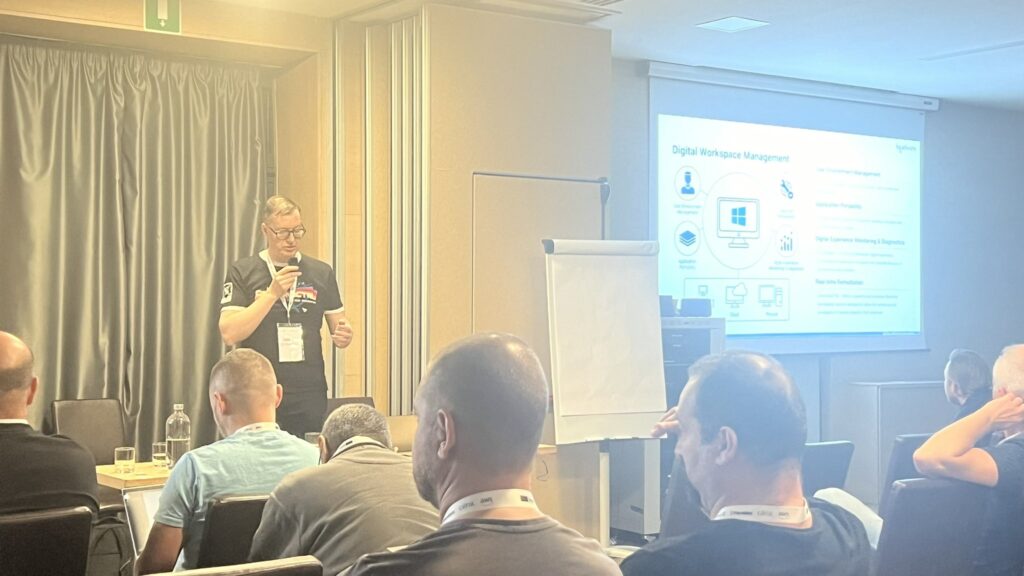
After lunch, I took some time to prepare for my community session with Gerjon Kunst, which was focused on the impact of AI on EUC.
In our session, we covered the history of AI, it did not just appear in 2023, the origin of AI goes back to the Turing test in the 1950s. Gerjon continued with the big players in this space: Google, OpenAI, Microsoft, Nvidia, Tesla and IBM and where to start with AI (ChatGPT, Midjourney, Dall-E, Business Application Integration and Microsoft-based options). We continued with use cases in VDI: Intelligent Assistance (proactive questions, seamless customer interactions, interactive VR-based training simulations and emotionally intelligent chatbots), predictive intelligence (predictive maintenance, smart resource allocation, adaptive interfaces, predictive content, instant actionable insights, automated dynamic reporting), collaboration/communications (real-time language translation, transcripts, AI-optimized virtual meetings), security/compliance (real-time compliance, intent-based detections, behavioural biometrics) and wellness/productivity enhancements (ai-enabled ergonomic suggestions, cognitive well-being monitoring).
The next topic from Gerjon was how to start the journey of AI showing the possibilities of AI (Team integrations, building your own bot). I continued with Responsible AI based on the principles of inclusiveness, fairness, transparency, accountability, reliability/safety and privacy/security, followed by downsides of AI and AI regulations (which are currently being discussed in the US and EU governments).
It was great to present with Gerjon and I feel we gave a good account of where AI currently is but because it is developing so rapidly, it is hard to predict where it will go next. We have already decided to do the session again next November and to review the developments over the year.
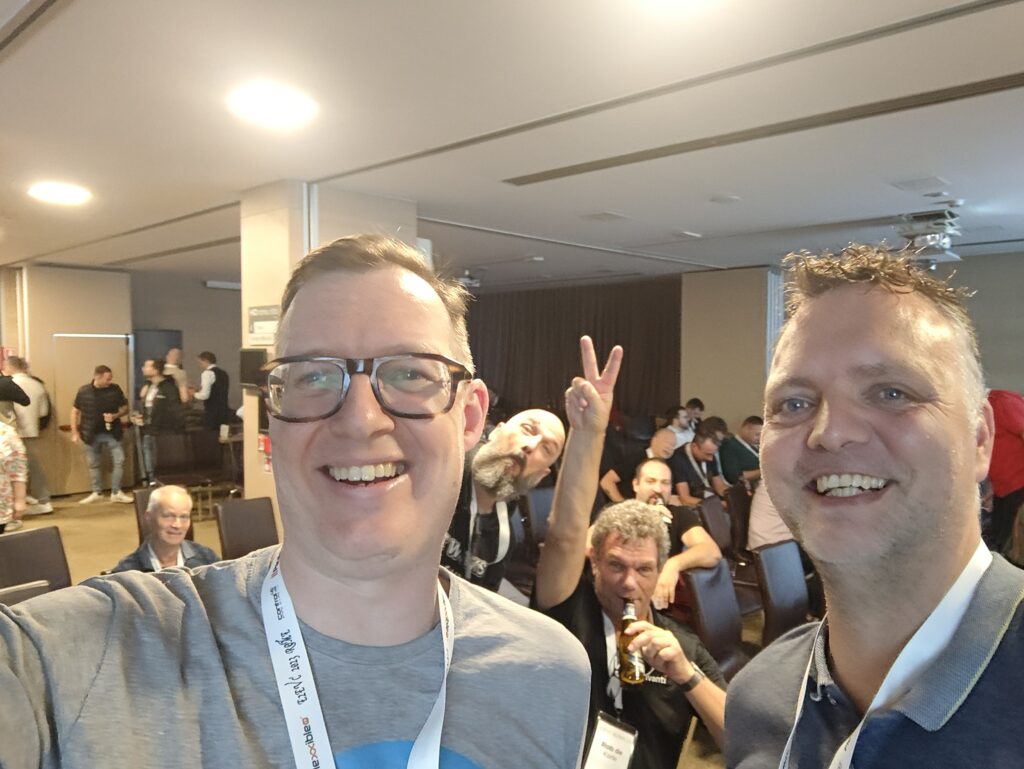
The final session of the day was What’s New in Citrix by Christian Schwendemann. The first topic was bringing cloud innovations to on-premises: these included universal subscription, web studio on-premises, Autoscale on-premises (power management, dynamic provisioning, vertical load balancing), Hybrid Citrix Director (both Cloud and on-prem from one console). Christian further discussed Secure Private Access for On-Premises, new Citrix Workspace User Interface, Custom Domain to Citrix Workspace, Citrix HDX Plus for Windows365 and EDT Lossy on Citrix Gateway Service. The topic was Director and monitor enhancements, followed by MFS Synthetic Monitoring Probes. Christian continued with the Local Host Cache Dashboard and configured Sync Failure alerts. Citrix Analytics for Performance was the next topic Christian discussed, followed by Session Recording Events in Citrix Analytics and Session Recording in Citrix Director. Also, VDA Clipboard Activity is now available in Citrix Analytics.
The evening finished with dinner in a nearby restaurant and then the conversation continued in the hotel bar.
Day 2
My day started with Jack Madden’s session What is VMware Anywhere Workspace and What Does it Have to do With Horizon? In the session, Jack went through the components of the Anywhere Workspace Platform (Virtual Apps/Desktops, Unified Endpoint Management, Digital Employee Experience including Platform Services). Of most interest was Jack going through VMware’s approach to DEX. In this section he covered Deliver, Measure, Analyse, and Remediate, including an overview of the DEX solution overview (Workspace ONE Intelligent Hub, Workspace ONE Intelligence Experience Management, Employee Sentiment, Guided Root Cause Analysis, Workspace ONE Intelligence for Horizon, Digital Employee Experience for Horizon, Workspace ONE Assist for Horizon). It was interesting to hear how another vendor approaches DEX. I recently talked with Jack’s former colleague Gabe Knuth on a podcast episode about DEX and how it is defined from his perspective.
Following this, I went to support my colleagues Andreas Van Wingerden and Berry Haveman in their session “”Unleashing the Dynamic Duo: Intune and Liquidware Supercharge Cloud-based Workspaces”. In their session Andreas started by laying out Liquidware’s modular approach to the digital workspace which starts at the delivery platform, we are agnostic so can support any platform, and covered the following layers – operating system, security context, applications, user environment, and experience monitoring. Berry then continued with a look at the main challenges and how ProfileUnity can overcome these challenges. He then talked about out latest FlexApp release 6.8.6 and the new features that are available in the release notes.

After lunch, I headed into Rome to experience some of its history and charm. The evening was spent at a steak house with some community friends before returning to hotel where the tech conversation continued including a deep look at AI and how it will be implemented within EUC.
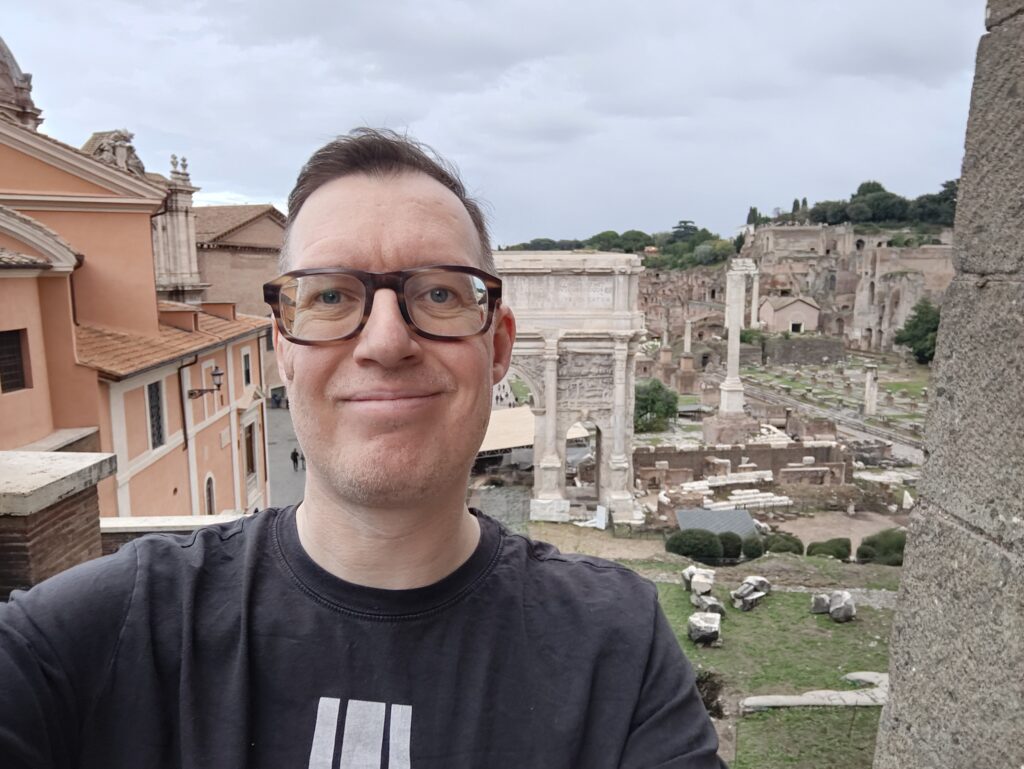
Day 3
The next, and final, morning brought a surprise because Christian Schwendemann asked Gerjon and me to take part in a session on offline AI along with Thomas Poppelgaard.

In the session we looked at how you can get set with running an offline AI which, unsurprisingly, requires a decent GPU! We looked at some open source models, why you would run an offline model, and the advantages and disadvantages of running offline.
E2EVC finished, as always, with Geekspeak. It is open forum where everyone, who is left, talks about the weekend sessions and the state of the EUC industry. It really is a great experience because you get uncensored insights from people across the industry.
Finally, after some pizza, it was time to head to the airport and home to Dublin. E2EVC, as always, was an amazing experience and a fantastic way to see the current state of the industry, but also have deep technical conversations in a relaxed atmosphere.
AI was obviously a major topic during the event and there were 4 sessions related to AI during E2E, I fully expect that to increase in 2024.
I am already looking forward to the next event and also the development of AI within EUC.

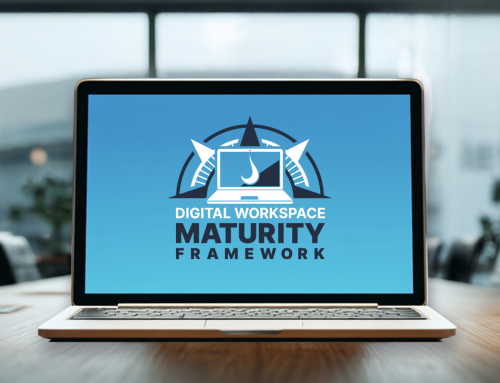






Leave A Comment
You must be logged in to post a comment.